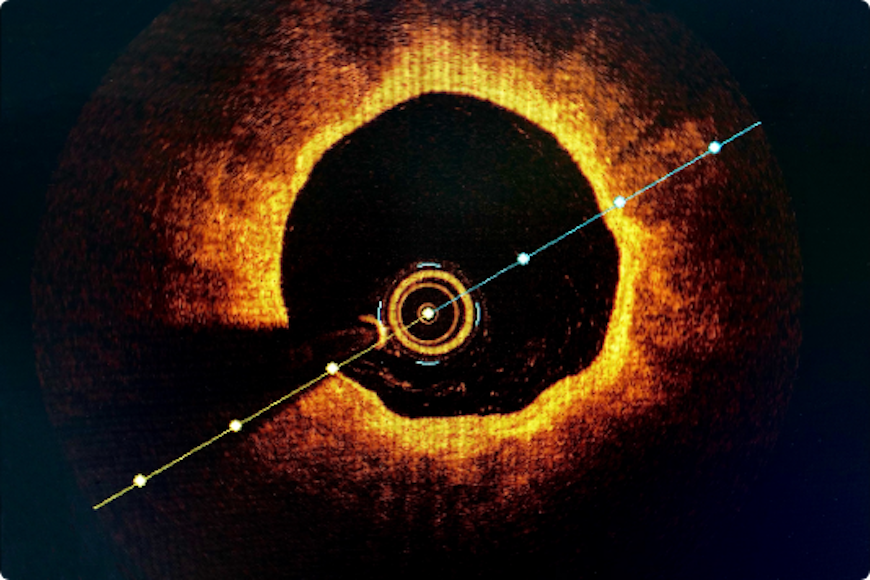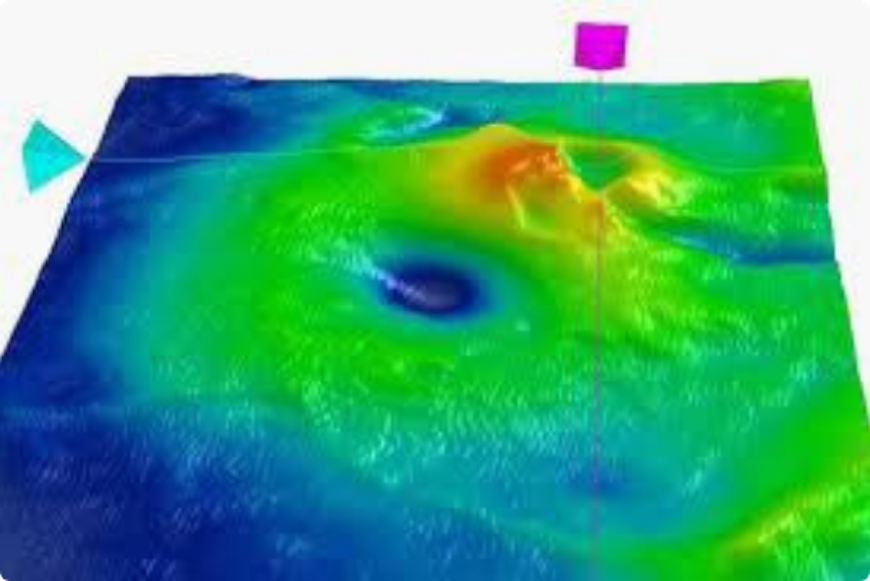Optical Coherence Tomography (OCT)
OCT is a medical imaging technique that uses light waves to capture micrometer- resolution, creating three-dimensional images from within optical scattering media (e.g. biological tissue). Optical coherence tomography is based on low-coherence interferometry, tipically employing near-infrared light. The use of relatively long wavelength light allows it to penetrate into the scattering medium. This makes OCT an essential method for in vivo analyzing retina tissue. Optical coherence tomography has achieved sub-micrometer resolution with sources emitting over an 840nm wave light range.

There are two methods of Optical Coherence Tomography(OCT): Time Domain and Spectral Domain.
From its inception, OCT images were acquired in a time domain fashion. Time domain systems acquire approximately 400 A-scans per second using 6 radial slices oriented 30 degrees apart. Because the slices are 30 degrees apart, care must be taken to avoid missing pathology between the slices.
Spectral domain technology, on the other hand, scans approximately 20,000-40,000 scans per second. This increased scan rate and number diminishes the likelihood of motion artifact, enhances the resolution and decreases the chance of missing lesions. Whereas most time domain OCTs are accurate to 10-15 microns, newer spectral domain machines may approach 3-micron resolution. Whereas most time domain OCTs image 6 radial slices, spectral domain systems continuously image a 6mm area. This diminishes the chance of inadvertently missing pathology.
Clinic Maja is equipped with the latest, precise and advanced model of Spectral domain High definition OCT (Cirrus, Carl Zeiss, Meditec)
What happens during OCT?
To prepare you for an optical coherence tomography (OCT) exam, your ophthalmologist may put dilating eye drop in your eyes in order to widen your pupil and make it easier to examine the retina.
You will be seated in front of the OCT machine and will rest your head on a support to keep it motionless. The equipment will then scan your eye without touching it. Scanning takes about 5 to 10 minutes. If your eyes were dilated, they may be sensitive to light for several hours after the exam.

What conditions can OCT help to diagnose?
Optical coherence tomography (OCT) is useful in diagnosing many eye conditions, including:
- Macular hole;
- Macular pucker;
- Macular edema;
- Age-related macular degeneration;
- Glaucoma;
- Central serous retinopathy;
- Diabetic retinopathy;
- Preretinal membranes.
In addition, OCT is often used to evaluate disorders of the optic nerve. The optic nerve is made up of many nerve fibers and sends signals from your retina to your brain, where these signals are interpreted as the images you see. The OCT exam is helpful in determining changes to the fibers of the optic nerve, such as those caused by glaucoma.
Since OCT relies on light waves, it cannot be used successfully with any condition that interferes with light passing through the eye, such as dense cataracts or significant bleeding in the vitreous (the gel in the center of the eye).

